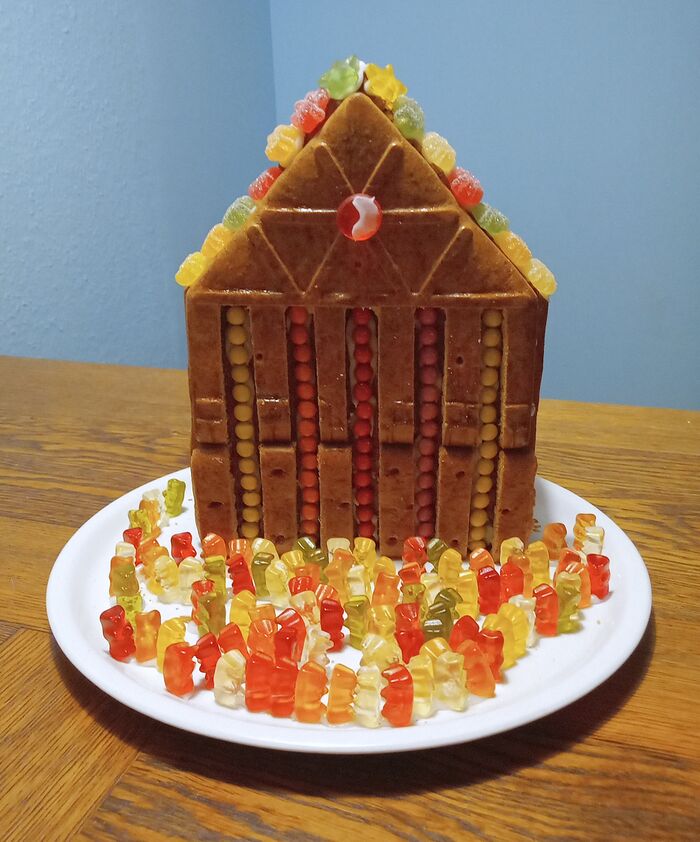Gingerbread Theatre
Aims
The activity is a first step towards understanding theatre architecture and modelling space. Students experiment with standard materials and prefabricated construction, as well as thinking about the audience-stage relationship, auditorium evacuation issues, and so on.
Key Information
| Number of learners | Working in groups, we suggest a maximum of 44 students in groups of 4. The project can also be done independently. |
| Number of staff | One teacher |
| ECTS Credits (if applicable) | Not applicable |
Learning process
| Lecture/seminar | Lecture, presentation, discussion (face-to-face or online) | |
| X | Making project | Making a model, mock-up, plan or design (physical or digital) |
| Performance project | Making a performance or demonstration (live or mediated) | |
| Records and Archives | Interviews, photographs and videos of artefacts, annotating archives, creating learning materials (physical or digital) | |
| X | Independent study | Reading, researching, analysing and evaluating learning materials (physical or digital) in groups or alone |
Type of learner
| X | Student of technical theatre |
| X | Student of theatre design, architecture |
| X | Student of theatre arts |
| Professional | |
| Researcher | |
| X | General public |
What You Will Need
Duration and schedule
The activity takes 3 hours:
30-120 minutes preparation by the teacher, gathering materials.
150 minutes with the learners: 15 minutes introduction 90 minutes working in groups 30 minutes presentation and discussion 15 minutes cleaning up together
Optionally, allow 30-90 minutes additional time for eating and celebrating the last session before the Christmas break!
Room or type of space
An ordinary classroom.
Equipment
- Kitchen equipment such as knives, bowls, and so on.
- A large wooden board for each group of learners to build the structure on.
- Cleaning materials.
Materials (consumables)
- A lot of ready-made pieces of gingerbread in all forms and sizes
- Jelly-bears in different colours (as spectators)
- Icing sugar, water and/or melted chocolate as a kind of “cement”.
Not necessary but nice:
- Sweets in all forms and sizes for decoration and to add detail.
- Water or tea to drink.
Learning resources (books, websites)
Models, drawings, photos and books of theatre and event architecture for inspiration.
Process
Preparation
Buy cookies and organise the material. Prepare a quantity of ingredients for each group. Ask the students to come not hungry and with extremely clean hands.
The learning activity
The teacher starts by introducing the activity, showing some architectural models, talking about size, human and building proportions, different kinds of auditorium and stage relationships, and so on.
Each student group then has one and a half hours to build their model. At the end of this time the group discusses the results.
Assessment and feedback
Feedback can be immediate, as part of the discussion.
Our Experience
Tips
Ask the financial department how to cover the cost as learning material (and not food!).
The session is the favourite lesson for years in our classes. Unfortunately the pandemic meant we could not allow students to eat food which was touched by a lot of hands, so we had to stop doing this project. We will be started it again!
This is a very fun activity!
Additional information and resources
Our gingerbread model of the Festspielhaus, Hellerau:
Credits
| This learning method was made by: | Prof. Dr.-Ing. Bri Newesely with Dipl.-Ing. Sarah Kamender |
| Institution: | Berliner Hochschule für Technik |

